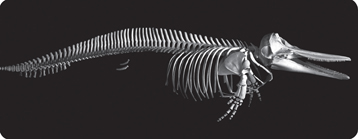
FIGURE 28–11 Vertebrate Skeleton A typical vertebrate skeleton, such as that of this dolphin, is made up mostly of bone.
Evolution has produced a wide range of variations of the vertebrate endoskeleton that enables these animals to swim, fly, burrow, walk, crawl, or leap, but they all provide strong, lightweight support. Of course, because an internal skeleton does not surround the body, it cannot protect an animal the way that an exoskeleton can. On the other hand, an internal skeleton can grow as an animal grows, so the animal does not need to molt. Because endoskeletons are lightweight in proportion to the bodies they support, even land-dwelling vertebrates can grow very large.
Joints If an animal's rigid skeleton were made of one piece, or if its parts were rigidly attached to each other, the animal couldn't move. Arthropods and vertebrates can move because their skeletons are divided into many parts that are connected by joints. Joints are places where parts of a skeleton are held together in ways that enable them to move with respect to one another. In vertebrates, bones are connected at joints by strong connective tissues called ligaments. Most joints are formed by a combination of ligaments, cartilage, and lubricating joint fluid that enables bones to move without painful friction.
Quick Lab
GUIDED INQUIRY
What Are Some Adaptations of Vertebrae?

Obtain a chicken neck from your teacher. Bend the neck back and forth and from side to side.
Insert a dissecting probe into the opening at the top of the neck. What do you observe? CAUTION: Use care with sharp instruments.
Infer How is the structure of the chicken's neck related to its function?
Predict What would happen if the chicken's neck were just one vertebra with no central opening?
Draw Conclusions How would you expect the verte-brae in an elephant's neck to differ from those in the chicken's neck? Explain your answer.
Analyze and Conclude
Muscles and Movement
 How do muscles enable movement?
How do muscles enable movement?
Muscles are specialized tissues that produce physical force by contracting, or getting shorter, when they are stimulated. Muscles can relax when they aren't being stimulated, but they cannot actively get longer. That presents a problem. Think about how animals move. Fishes swim by moving their bodies back and forth, and by pushing against the water with their fins. Your legs work by swinging backward and forward, pushing against the ground as you walk. But how can animals move limbs backward and forward or push against water or land if muscles generate force in only one direction?
 In many animals, muscles work together in pairs or groups that are attached to different parts of a supporting skeleton. Muscles are attached to bones around the joints by tough connective tissue called tendons. Tendons are attached in such a way that they pull on bones when muscles contract. Typically, muscles are arranged in groups that pull parts of the skeleton in opposite directions. Here's how muscles and parts of a skeleton work together.
In many animals, muscles work together in pairs or groups that are attached to different parts of a supporting skeleton. Muscles are attached to bones around the joints by tough connective tissue called tendons. Tendons are attached in such a way that they pull on bones when muscles contract. Typically, muscles are arranged in groups that pull parts of the skeleton in opposite directions. Here's how muscles and parts of a skeleton work together.

Table of Contents
- Formulas and Equations
- Applying Formulas and Equations
- Mean, Median, and Mode
- Estimation
- Using Measurements in Calculations
- Effects of Measurement Errors
- Accuracy
- Precision
- Comparing Accuracy and Precision
- Significant Figures
- Calculating With Significant Figures
- Scientific Notation
- Calculating With Scientific Notation
- Dimensional Analysis
- Applying Dimensional Analysis




